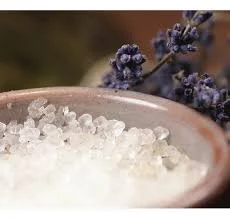Muscle Marinades are made with only natural ingredients from nature, no chemicals and no drugs.
Made with natural oils that moisturizes and softens the skin to prevent dryness while penetrating deeply for fast pain relief. Free of NSAIDS, Parabens and propylene glycol.
Some of the natural ingredients blended into the Muscle Marinades:
Capsaicin
Rosmary
Menthol
Arnica
Camphor
Clary Sage
Tea Tree
Boswellia
Hemp
MSM
Copaiba
Aloe
Devils Claw
Peppermint
Magnesium
Clove
Original Formula
The Original Formula’s active ingredient is Capsaicin. Capsaicin is the “heat” the comes from chili peppers. The use of Capsaicin as a topical analgesic is supported in literature. The Centers for Disease Control and Prevention (2016) recommends the use of topical capsaicin as as alternative first line of medication for musculoskeletal pain. In a systematic review of double-blinded , randomized placebo controlled studies conducted by Yong et al., (2016), found topical capsaicin to be an effective pain-relieving agent. Illie et al. (2019) states that unmyelinated Type C nerve fibers have extensive receptors for capsaicin.
Capsaicin effects the nerve fibers by desensitizing the nerve fibers and blocking conduction of pain impulses to the central nervous system.
Ultra Kool
The active ingredients found in the Ultra Kool formula are menthol, wintergreen and camphor. These ingredients are what give the Ultra Kool its cooling sensation. These cold sensations stimulate the nerve receptors that block pain signals and relieve pain.
Rest n’ Recover
Magnesium is the active ingredient in Rest n Recover.
What is Magnesium? A vital regulator of basic health.
Without Magnesium we could not produce energy, our muscles would be in a permanent state of contraction, and we could not adjust the levels of cholesterol produced and released into the blood stream.
Magnesium regulates over 300 biochemical reactions in the body, it is the second most abundant element inside human cells.
Within every cell in the body, a proper balance of mineral content must be maintained. Magnesium’s role in the healthy balance (homeostasis) of important minerals such as calcium, sodium, and potassium affects the conduction of nerve impulses, muscle contraction, and heart rhythms.
Magnesium plays a pivotal role in regulating heart health. Magnesium is a known modulator of calcium, competing with calcium for entrance into cells and keeping many cellular processes in balance.
Symptoms of Magnesium deficiency may include: loss of appetite, nausea, fatigue and weakness. Extreme Magnesium deficiency can cause numbness, tingling, muscle cramps, and abnormal heart rhythm.
Magnesium is found naturally in many different foods. Many Americans don’t get as much of the mineral as they should in their diets. Still, the average adult may only get half of their daily-recommended magnesium in their normal diet. This could be a result of the amount of processed foods we eat.
What Foods are High in Magnesium?
In general rich sources of magnesium are greens, nuts, seeds, dry beans, whole grains, wheat germ, wheat and oat bran. The recommended dietary allowance for magnesium for adult men is 400-420 mg per day. The dietary allowance for adult women is 310-320 mg per day.
Magnesium has been re-discovered as an overlooked key to overall wellness, with some numerous medical researchers recommending increases to the RDA- some suggesting amounts as high as double the current recommendations.
In nature, magnesium can be found in many different forms, such as Magnesium Chloride.
One small study, reported in the Journal of Integrative MedicineTrusted Source, indicated that transdermal application of magnesium chloride on the arms and legs of people with fibromyalgia reduced symptoms, such as pain. Participants were asked to spray magnesium chloride four times on each limb, twice daily, for one month. Some people with fibromyalgia have too little magnesium in muscle cells. Most magnesium in the body is housed in either muscle cells or bone.
















